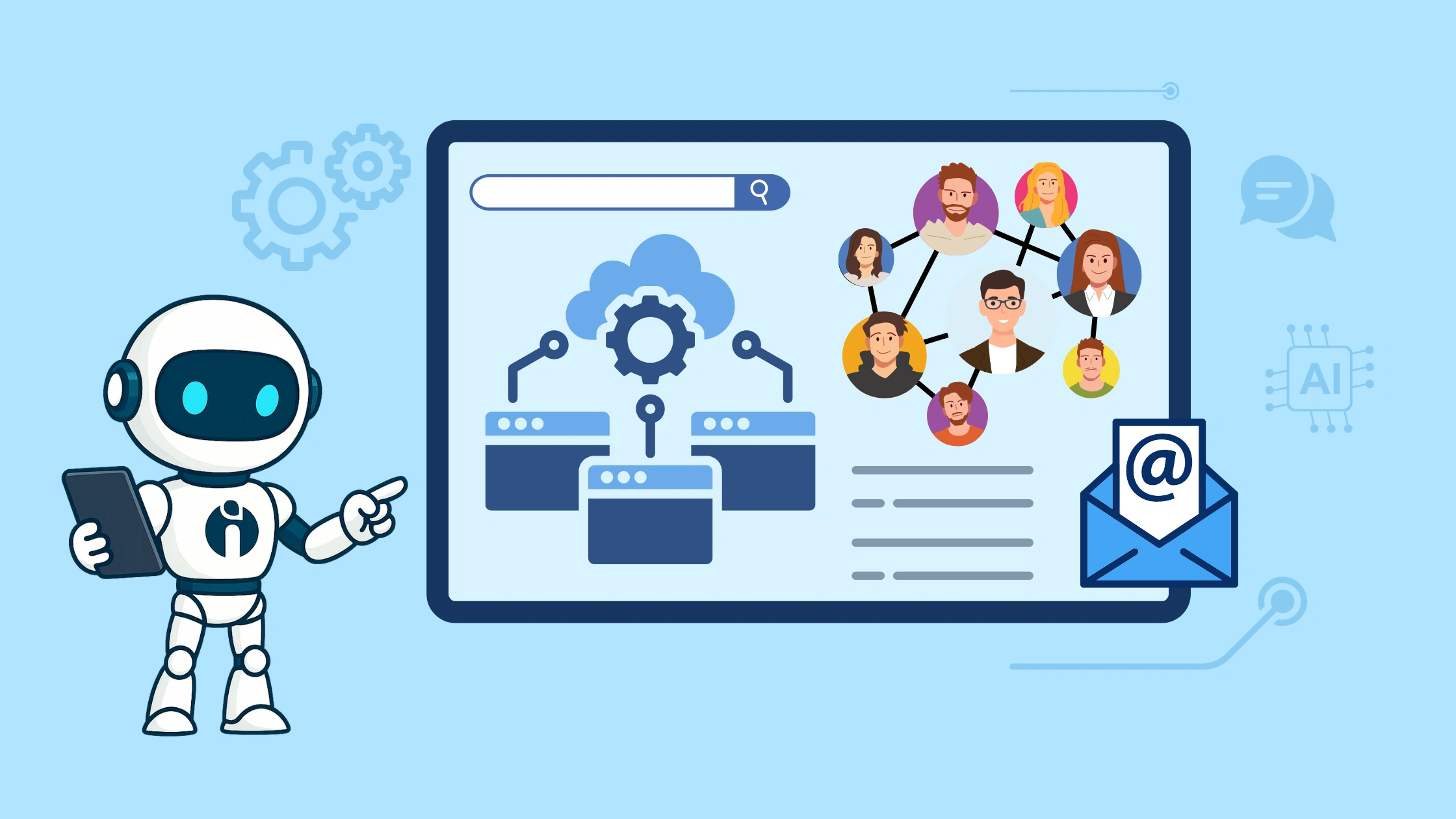TL;DR
- The future of recruiting is shaped by AI, automation, data-driven hiring, and emphasis on diversity and remote work.
- Recruitment challenges include skilled talent shortages, candidate drop-offs, outdated technology, and lack of personalisation.
- Adapting strategies involves embracing AI, leveraging data analytics, focusing on employer branding, and improving candidate experience.
- Building talent pools, personalising interactions, and encouraging internal mobility are key to future-ready recruitment.
- Advanced recruitment technology like AI resume parsing, automation, and multilingual support streamline hiring processes.
The world of talent acquisition is evolving faster than ever. From the rise of artificial intelligence to changing candidate expectations, recruitment is no longer just about filling vacancies. It is now about building meaningful relationships, offering a compelling employer brand, and leveraging the latest technologies. Businesses that fail to adapt risk falling behind in a competitive market.
Here, we will help you understand how to stay relevant and competitive by aligning your strategies with the future of recruiting. Whether you are part of a recruitment agency, an internal HR team, or a staffing firm, embracing innovation and transformation is no longer optional. It is the only way to attract, engage, and retain top talent in a dynamic world. Let us explore how you can successfully prepare for the future of recruiting and turn upcoming changes into growth opportunities.
Understanding the Trends Shaping the Future of Recruiting
The future of recruiting is being influenced by a series of powerful trends that are transforming the way organisations find and hire talent. These trends include:
- Artificial Intelligence and Automation: AI is streamlining repetitive tasks like resume screening, candidate sourcing, AI job matching and initial communication.
- Data-Driven Hiring: Analytics tools are helping recruiters make smarter decisions using insights such as time to hire, cost per hire, and source effectiveness.
- Diversity and Inclusion: There is a growing emphasis on building inclusive workforces by removing unconscious bias from hiring practices.
- Remote and Hybrid Work Models: These models are now a permanent part of workforce strategies, expanding the talent pool beyond geographic boundaries.
- Recruitment Marketing: Attracting passive candidates through content, social media, and employer branding is gaining importance.
To thrive in the future of recruiting, you must not only be aware of these trends but also take proactive steps to integrate them into your strategy.
What are the Common Challenges Recruitment Teams Must Address?
Adapting to the future of recruiting requires acknowledging the real challenges that many organisations currently face:
- Shortage of Skilled Talent: Finding candidates with the right mix of skills and experience is becoming harder across industries.
- Candidate Drop-offs: Lengthy application processes and a lack of communication result in high abandonment rates.
- Outdated Recruitment Technology: Many teams still rely on manual processes or disconnected systems that hinder scalability.
- Lack of Personalisation: Generic outreach fails to resonate with modern candidates who expect tailored experiences.
- Compliance and Fairness: Ensuring ethical and unbiased hiring is both a moral and legal necessity.
To stay competitive, these pain points must be addressed with the help of strategic planning and modern tools.
How to Adapt Your Recruitment Strategy?
Embrace AI and Automation
Leverage AI-powered solutions to automate repetitive tasks like screening, parsing CVs, scheduling interviews, and chatbot interactions. This allows recruiters to focus on high-value activities like candidate engagement and relationship building.
Make Decisions Based on Data
Track recruitment KPIs and use analytics dashboards to improve hiring efficiency. Metrics such as source of hire, time to fill, and quality of hire provide clarity and guide strategy.
Prioritise Employer Branding
Create a strong employer brand by showcasing company culture, employee testimonials, and benefits on your website and social platforms. This is key for attracting passive candidates in the future of recruiting.
Focus on Candidate Experience
Simplify application processes, use mobile-optimised forms, and maintain clear communication with candidates throughout the journey. This improves your conversion rates and strengthens your brand reputation.
Build and Nurture Talent Pools
Develop long-term relationships with potential candidates even when no position is open. Tools like Recruiting CRM help maintain regular communication and track candidate readiness.
Personalise Every Interaction
Use data and segmentation to send personalised messages based on role, industry, experience level, and more. Modern candidates expect tailored content and relevant opportunities.
Encourage Internal Mobility
Map internal talent and provide clear paths for progression. Retaining top talent is often more cost-effective than hiring externally.
What Role Will Recruitment Technology Play in the Future of Recruiting?
Technology plays a central role in shaping the future of recruiting. Platforms like iSmartRecruit are leading this transformation. Here is how:
- AI Resume Parsing: Helps identify top candidates in seconds based on job descriptions and role requirements.
- Automation Features: Automate email campaigns, interview reminders, and task assignments to reduce manual workload.
- AI Job Matching: Automatically compares candidate profiles with open roles to find the best fit, improving the quality of hire and reducing time to hire.
- AI Job Description Generator: Drafts clear and inclusive job descriptions based on role objectives, required skills, and tone preferences.
- CoPilot for Recruiters: Acts as a smart assistant to guide recruiters through sourcing, screening, and engaging candidates efficiently.
- Integrated Video Interviewing: Conduct structured interviews remotely with scoring tools that help evaluate soft skills and cultural fit.
- Multilingual Support: Reach a global talent pool with communication in multiple languages.
- Advanced Reports: Track performance metrics to continuously refine your recruitment process.
- Candidate Engagement Tools: Use recruiting CRM to maintain relationships and reduce time to hire.
What are the Top Future-Ready Recruitment Tips for 2026?
- Use gamified assessments to engage younger talent.
- Incorporate video interviews and pre-recorded responses to streamline screening.
- Adopt skills-first hiring instead of relying only on degrees or past roles.
- Explore predictive analytics to anticipate hiring needs.
- Offer flexible working arrangements to widen the talent pool.
Conclusion
The future of recruiting is full of opportunities for those willing to adapt. As technology evolves and candidate expectations shift, successful hiring will depend on your ability to remain agile, data-driven, and human-centric. By embracing AI, improving candidate experience, and aligning with modern trends, your recruitment process can become a strategic advantage. The sooner you evolve, the sooner you can lead. If you are ready to embrace innovation and elevate your hiring journey, book a quick demo with iSmartRecruit today and experience the future of recruiting first-hand.
Frequently Asked Questions (FAQs)
1. What is the future of recruiting?
Recruiting is evolving with AI, automation, and data-driven strategies, focusing on enhancing candidate experience and streamlining hiring processes.
2. How is AI changing recruitment?
AI automates tasks like resume screening and interview scheduling, enabling recruiters to concentrate on strategic decision-making and candidate engagement.
3. What are the latest trends in recruitment technology?
Emerging trends include AI-driven job matching, predictive analytics, virtual interviews, and skills-based hiring platforms.
4. How can candidate experience be improved in recruitment?
Enhancing communication, simplifying application processes, and providing timely feedback are key to improving candidate experience.
5. What is predictive analytics in recruitment?
Predictive analytics uses historical data and algorithms to forecast hiring outcomes, aiding in identifying suitable candidates and reducing turnover.














